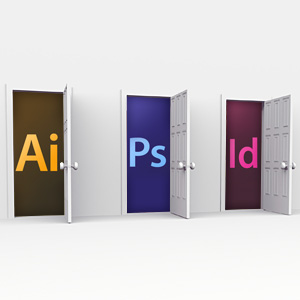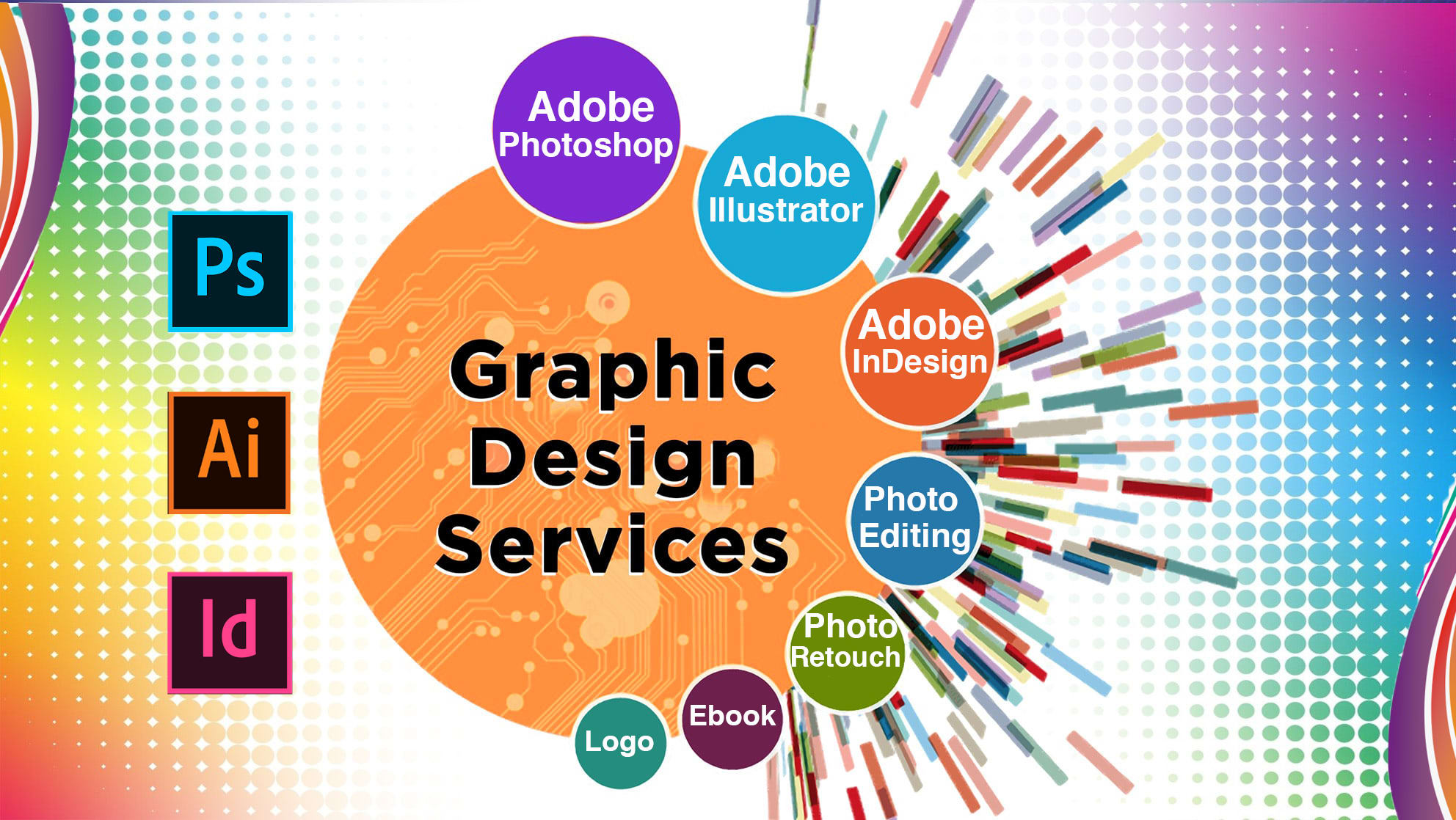- Find out which tool is better with a detailed comparison of Adobe Illustrator CC & Adobe Photoshop CC & Adobe InDesign CC. Use an easy side-by-side layout to quickly compare their features, pricing and integrations.
- Photoshop, Illustrator and InDesign represent the “big three” of the Adobe Creative Suite—but never assume that one is interchangeable with another.
- Adobe Indesign Vs Illustrator
- Adobe Photoshop Illustrator Indesign Package
- Adobe Photoshop Illustrator Indesign Price
- Difference Between Indesign And Photoshop
Join us LIVE as Adobe Evangelist Terry White shows the advantages and differences between Photoshop, Illustrator and InDesign and when you should use each on.
Today I would like to clarify a lot of misconceptions regarding the Adobe Products. But most importantly the best practical approach on using “three” basic design platforms created by Adobe. This article/tutorial covers mostly the three practical software to use for art and design, which are, Adobe Photoshop, Illustrator, and Indesign. As more and more features get added from version upgrades and update patches, it is important as a designer to understand which software is the best solution to reach the optimal results in your freelance projects or your personal projects.
Adobe Photoshop
There are a lot of tutorials on Adobe Photoshop. As a matter of fact, there are so many tutorials that focuses on Photoshop that many people contact me stating that there are not enough tutorials on Illustrator or Indesign. It is a good thing that there are a lot of tutorials on Photoshop, but there are some negative side effects within widely vast available information. These tutorials help you become an expert on this software. The problem: The vast information network on Photoshop tutorials also causes people to become “too comfortable” with Photoshop and tend to “try” to do everything with Photoshop alone.
What is Photoshop?
The most important thing to know about Photoshop is that it is a pixel based program. Photoshop was primarily created in the beginning as a photograph enhancing tool and not so much anything else like it is used today. Adobe has recognized that many users were starting to use Photoshop to create elaborate UI designs, web page graphics, banner ADs, text effects and more. Adobe then started rolling out features that help designers create images for print, web, motion graphics and so on. However, again, the problem is that there are certain times when Photoshop is not needed (gasp!) to create certain projects.
Photoshop is generally used for:
- Photo enhancement/Photo color correction
- Software/Web/Mobile UI design
- Web graphics
- Motion graphics
- Special effects
Common mistakes/misconceptions
One common misconception is the idea that it is good to use Photoshop to create stationary systems and logo’s. For the sake of yourself, please take this idea outside the window. Let’s talk about business cards as an example. There is an alarming number of tutorials online that shows you how to create business cards in Photoshop. These are what I call “bad tutorials” that teaches you the wrong way of creating a business card. Despite the result and outcome of these tutorials being amazing, or perhaps you can even get it printed and it will look fine, it is a bad practice to get into an habit. Just because the result looks fine don’t mean the practice is the best way.
First off Illustrator type is by far superior in print output than Photoshop is. Yes Photoshop can output type, and even in vector “paths”. Yes Photoshop can bring in vector objects as “smart objects”. Yes Photoshop can draw paths using the pen tool. But the most important thing out of all this is that IN THE END, it is outputted as pixel data. Yes I am aware that it also depends on the file output. For instance, .TIFF does not output vector data but does output layer information and transparency. But .EPS does support vector output, yet it still doesn’t mean this is the best practice to do so. So should you never use Photoshop to create business cards? There are times you actually want to use Photoshop to create business cards.
When it is justified to use Photoshop for business cards and other print projects
If your business cards contain any textures, photography, special effects, blurs (not that I am encouraging this), or any type of pixel based design, Photoshop is obviously the best way to go. However, remember to output ANY pixel based art work in 300 ppi resolution with CMYK color mode. Do not output it RGB. If you have Photoshop filters in your artwork, changing your work to CMYK mode, or even applying certain filters in CMYK mode seem to look desaturated or not look too good.
To work around this: Create all your special effects, filter effects, etc. in RGB mode. Flatten the work (merge layers) after you feel that your work in Photoshop is complete, and change the color mode to CMYK. Again, you will regret not switching color modes to CMYK after you send it off to the printer. Your result will look significantly different than you hoped for.
When you should never use Photoshop for print projects
For the love of all things that you love, do not use Photoshop to set type in your print projects. It is important to note that I am not saying you should never use the type tool in Photoshop. I am stating that it is not a good idea to use it in print projects.
Never use Photoshop to create logo’s. The obvious reason is because pixel data cannot be enlarged without distortion. If you create the logo in vector format, your logo will be scalable to any size forever.

Adobe Illustrator
What is Adobe Illustrator
Well as the program states, Adobe Illustrator is a vector based drawing program. It is primarily used to create vector graphics that require to be scalable in print and for future uses. Adobe Illustrator is very similar to drawing programs like Adobe Fireworks (Macromedia Fireworks in the early 2000’s), and Corel Draw. It is superior in creating logo’s and logotype, and has an awesome type setting system within the program. Adobe Illustrator does one thing Photoshop can never meet up to its standard, and that is vector output. Whatever you create in Illustrator is scalable to the infinite power.

Illustrator is generally used for:
- Logo/Logotype/Monogram/Insignia design
- Type setting for stationary systems/print campaigns
- Web graphics
- Motion graphics
- Vector paintings/Illustrations
Common mistakes/misconceptions
Although Illustrator can be used to create websites in the fullest degree, Photoshop is still ideally the best program in creating UI designs and other graphical elements for your website. Of course it will not be as harmful as creating business cards in Photoshop, but you will quickly find that the snapping feature in Photoshop is much precise in terms of pixels than Illustrator is.
Illustrator cannot do animation. If you are looking to do flash animation, Illustrator will not do this for you. The best practice is to create graphics in Illustrator and bring them into Flash for the principle animation.
Illustrator filters do not work the same way as Photoshop filters. You will be surprised in how many people think the filters work the same way as Photoshop. This is false.
The prime time to use Illustrator

As stated above, Illustrator is excellent for logo design, trademark design, logotype, type setting stationary systems, and creating greeting cards or wedding invitations.
After the release of Illustrator CS4, it is now possible to create simple to complex brochures, annual reports, and even books in Illustrator CS4 and up. The only draw back to this is that it does not have master page utility in Illustrator like Indesign. It also does not support book templates and page numbers like Indesign. Although Illustrator CS4 and up has support for multiple artboards to create “pages”, it is simply there to create short page brochures, or when you want to output multiple PDF pages of your design variations to show your clients.
Illustrator also has cross platform compatibility with Aftereffects. Importing .EPS files that contain text drawn in Illustrator is essentially better than importing .TIFF files that contain text drawn in Photoshop. Aftereffects support vector data to a certain degree during production (continuous rasterize).
Adobe Indesign
There isn’t much confusion making when it comes to Adobe Indesign. Since Adobe Indesign itself is pretty specific in terms of what it can do and what it doesn’t do, while Photoshop and Indesign both share similar tools, interface, and abilities to create web graphics to in almost identical level.
Indesign is generally used for:
- Editorial design
- Book design
- Multiple page brochures
- Annual reports
- Interactive PDF documents
Common mistakes/misconceptions
Although it is possible to “draw” objects in Indesign, it is not superior to drawing as it is with Illustrator. You should not draw elements in Indesign, but instead, use programs such as Illustrator or Photoshop to draw out the elements and import them into Indesign. Indesign also does not have filters like Photoshop. Creating a logo in Indesign is next to impossible.
Although there isn’t much misconception with Indesign, there is much wide spread debate about Illustrator having better layout support than Indesign. Indesign however has better layout support, if not, identical to Illustrator.
When to use Indesign
If your project consist of a print project that has multiple pages or a master layout, Indesign has the master page function to do this. Indesign also has excellent support for 3 column layouts and so on. Creating type wrap in Indesign is much straightforward than Illustrator.
Illustrator vs. Indesign
Adobe Indesign Vs Illustrator
- Illustrator does not have master pages.
- Illustrator cannot define page numbers.
- Indesign cannot draw objects as well as Illustrator.
- Indesign does not have filters, as Illustrator does.
- Indesign has superior type wrapping tools, while it maybe a bit confusing with Illustrator.
Illustrator vs. Photoshop
- Illustrator has superior vector support, while Photoshop has limited.
- Illustrator does better page layout than Photoshop.
- Illustrator does not handle pixel art the same way as Photoshop does in terms of effects.
- Photoshop is superior for photo enhancing.
- Photoshop creates precise pixel based UI designs compared to Illustrator.
- Illustrator supports multiple page output for PDF while Photoshop does not.
- Photoshop layers is much straight forward than Illustrator. Organizing elements is much easier in Photoshop because of this.
- Illustrator supports the “Place” (Importing graphics) command through dynamic file linking. Photoshop’s “Place” command is strictly embedded into the .PSD file and is not linked. This means that you can make changes to a certain file outside of Illustrator and you can reflect the changes in Illustrator using the Links panel. In Photoshop, whatever you place is permanent. Photoshop Creative Cloud 2014 now supports linked images using the “Place” command.
- Illustrator exports .EPS file formats better than Photoshop.
Adobe Photoshop Illustrator Indesign Package
Indesign vs. Photoshop
Adobe Photoshop Illustrator Indesign Price
- Indesign creates page layouts while Photoshop does not.
- Indesign links elements or design objects from various locations in your hard drive. Photoshop does not. It is all placed in the document.
- Indesign supports multiple pages for PDF and print. Photoshop is all one document.
- Photoshop has filter effects while Indesign is limited.
- Indesign supports XML, Photoshop does not.
- Indesign supports vectors, imports .AI and .EPS with vector data encoded. In Photoshop this gets converted to paths or pseudo vector. The final output is still pixel based.
Difference Between Indesign And Photoshop
I hope this article was helpful to you. If you have some insight please let me know by commenting below. If you feel like I was wrong or I should add something to this article, please mention it in the comment section. You can also see more of where this came from over on our website: www.outsourcenola.com Happy designing!

Comments are closed.